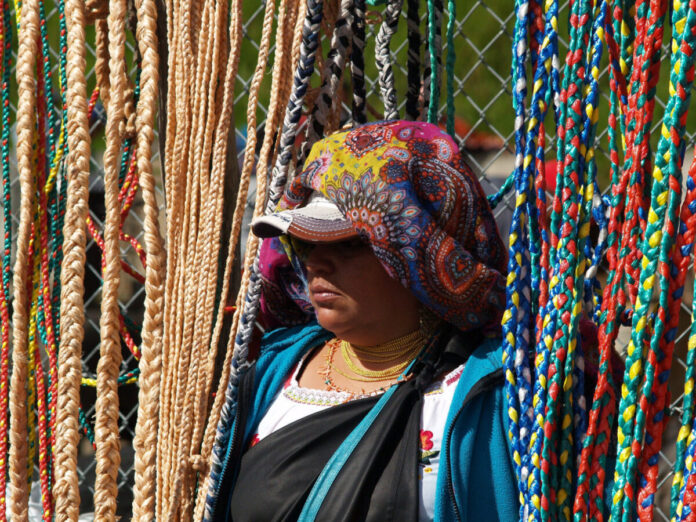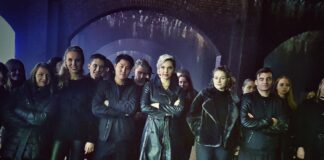A Woman’s Guide to Short Stays in Quito
I’m not gonna lie – Quito is not my favorite place in Ecuador (is it bad to start an article that way?). There are just so many more hole-in-the-wall, intriguing places to visit in that compact country. Quito is much like any big city (which may explain my apathy): crowded and messy; loud and pretentious. But, also like other cities, it has some inescapable attractions.
First and foremost, Quito is Ecuador’s second largest city (after Guayaquil) and the capital. It has a major international airport and all the accouterments to go with it. There are embassies and convention centers and museums and gothic churches, as well as cultural and socioeconomic diversity (some). And there are tourist attractions (lots) as well as a large variety of places to stay. It’s a massive undertaking to describe this city, and I won’t try to do it here. There are some wonderful guides to Quito, if you really want to settle in and experience the city (we will likely publish some others in the near future).
This guide is based on the time I spent in Quito, which mostly revolved around arrivals and departures to and from other places. Quito is one of the major transportation hubs of the country. Whether you are traveling to the Amazon, climbing Cotopaxi, sailing to the Galapagos, or planning a visit to historic Cuenca; whether you are traveling by plane, train, or automobile; chances are, you will have to pass through Quito. Might as well make the best of it.
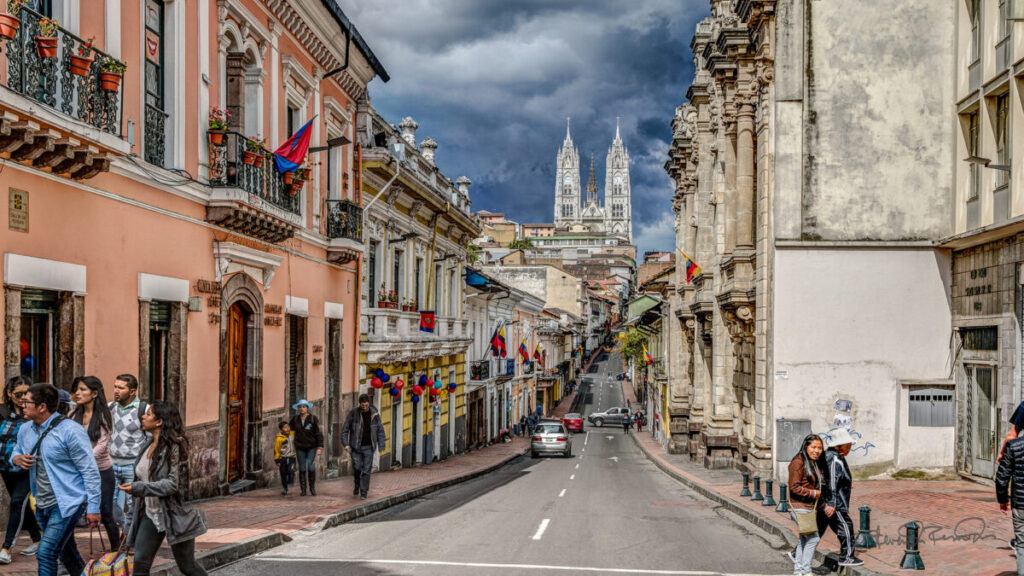
photo: Steven dosemedios via flickr
Places to Visit Near Quito:
My visits were usually short (almost never more than a few days). Not wanting to waste any of my precious travel time, however, I always tried to find something interesting to do while I was in the city. Here are some of my favorite discoveries.
Termas de Papallacta
After a long flight (or bus ride, or sailing trip), who couldn’t use a long soak in a warm bath? Luckily for you, if you have a layover in Quito, there is an enormous natural bath just under 2 hours down the street. Termas de Papallacta are a series of natural hot springs in the volcanically-active Andes SE of Quito. It is an incredible location for a hot spring, and definitely one to check off your list if you chase after such things. The views are breathtaking, set in the middle of the cloud forest, with white-capped volcanoes rearing up out of a field of green. There are numerous pools scattered around the property, with varying degrees of warmth (and even a cold pool). Don’t forget to wear sunscreen, though! This place is perched at 3,300 meters (>10,800 feet) elevation; that is really high, and the sun is incredibly intense.
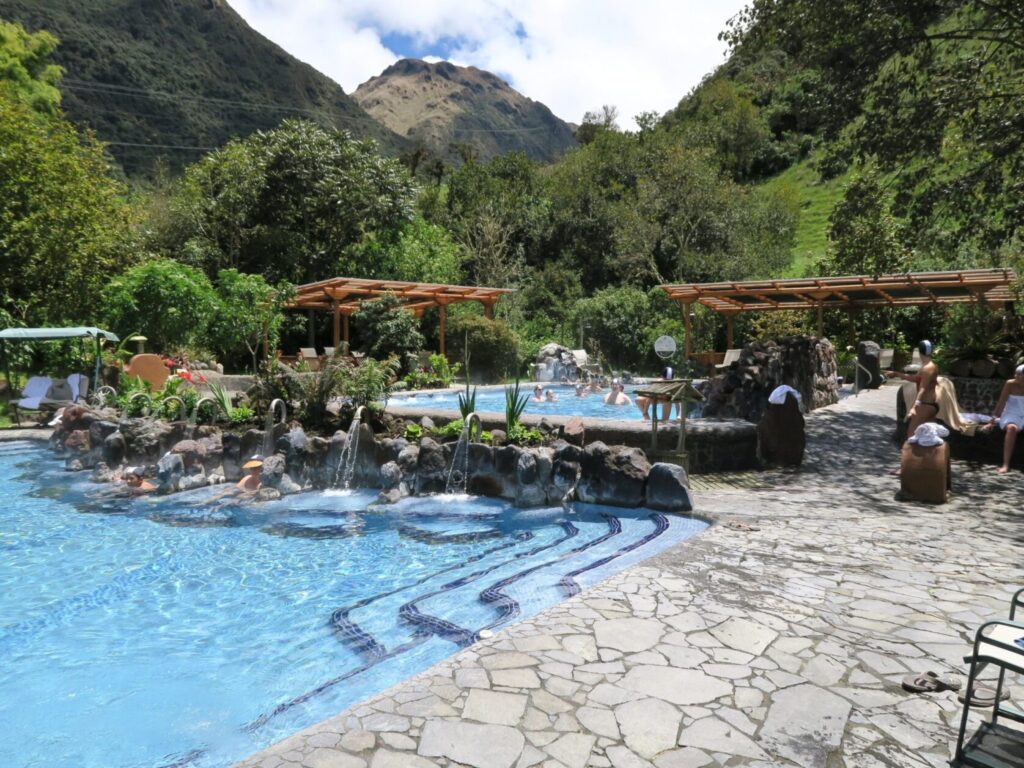
Photo: Sue via Flickr
There is, of course, a fancy resort and spa treatment facility where you can stay over and really pamper yourself with various health and beauty treatments. The resort offers free floaties for people using the pools, and free medical consultation on-site (important when your brother forgets to wear sunscreen and gets 2nd degree burns across his entire back – oops). You can easily get a bus to and from Quito in the same day, but if you want to stay over, check out Hosteria La Choza de Don Wilson, just down the street from the resort. (Did I mention this is a big trout area?) If you stay at La Choza, be sure to eat the trout. It’s delicious. Also, you’ll notice that Don Wilson does not have electricity. Thus, no refrigeration. (Remember? Big trout area? Trout farm?) As such, it is unwise to eat meats which might require refrigeration. ( My younger brother Michael learned this the hard way while visiting. He spent a week paying for his error.)
Hours: Daily 6a-10:30p
Cost: Adults $9, Kids (3-11) $4.50, 2&under Free
Getting There: Bus from Quito Terminal Quitumbe, 1 hr. 45 min.
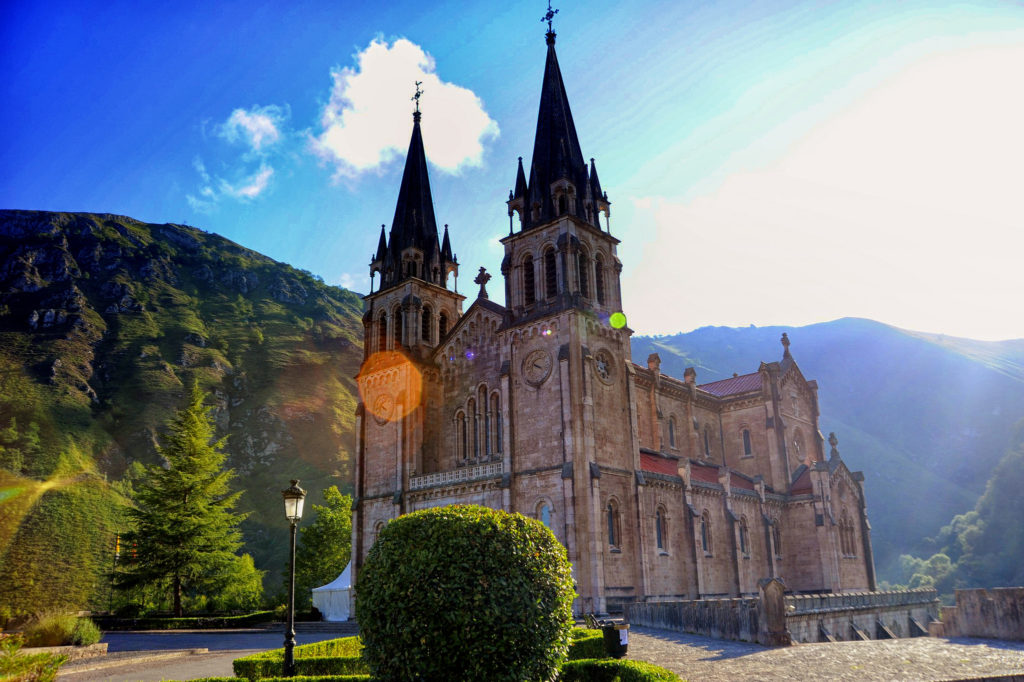
photo: Andres Alvarado via Flickr
Basílica del Voto Nacional
Even if you only have one day in the city, you should definitely visit the Basílica del Voto Nacional, a Gothic cathedral straight out of medieval Europe. It is weathered and beaten-looking, but was only consecrated in 1988, after almost 100 years of construction. Actually, it’s not even technically finished yet. Local legend has it that finishing the Basilica will mean the end of the world. So, you know, maybe for the best.
The Basílica del Voto Nacional (Basilica of the National Vow) is the largest neo-Gothic basilica in the New World. The idea for it originated in 1883, as a monument of Ecuador’s consecration to the Sacred Heart. It was designed by architect Emilio Tarlier, and he replaced the typical gargoyles and other grotesques with endemic animals of Ecuador and the Galapagos (marine iguanas, armadillos, Galapagos tortoises, and others). There are incredible feats of stained glass artistry, as you might expect in a Roman Catholic cathedral, and you will be awed by the sheer size of it: 140 meters (460 feet) long and 35 meters (115 feet) wide. The two frontal towers are a soaring 377-feet high. Oh, and don’t miss the opportunity to risk your life climbing through the causeway up into those towers —you will be rewarded with a view of the city and the Panecillo that will take your breath away! Just don’t look down.
Hours: Daily 9a-7p
Cost: $2/person
Getting There: Bus or taxi to Centro Histórico – Calle Carchi 122 y Venezuela
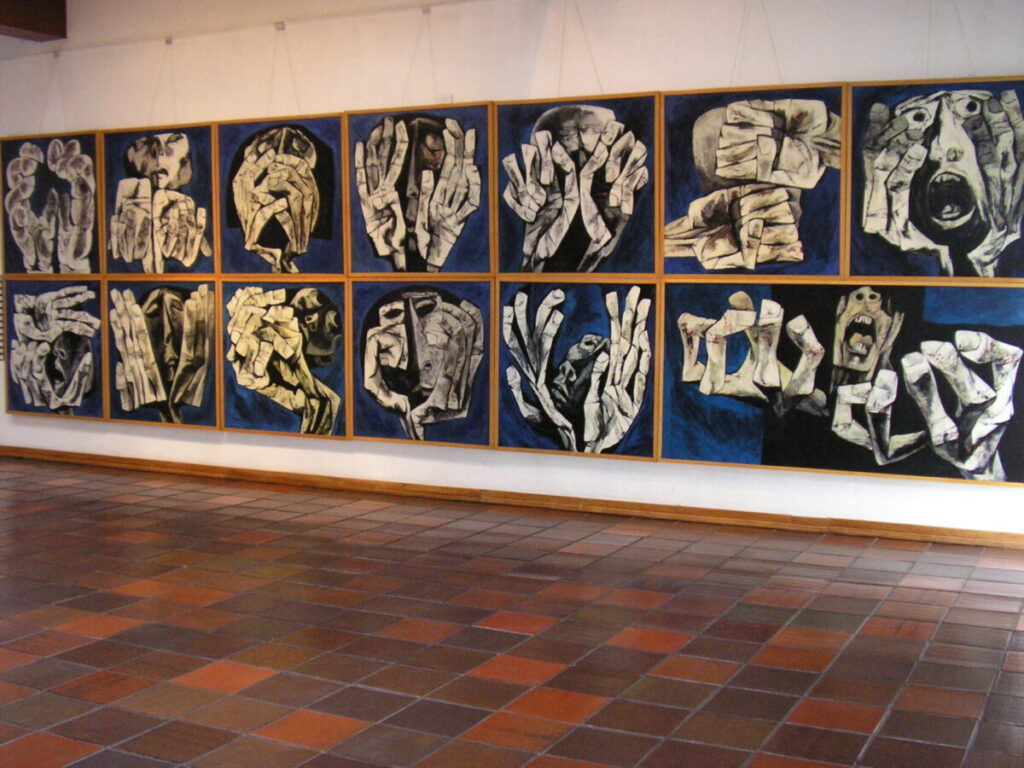
photo: by Lisa Riley
Capilla del Hombre and the Guayasamín Museum
Oswaldo Guayasamín (1919-1999) is one of Ecuador’s most famous artists. Born into a poor family of native descent, he was the oldest of 10 children and began painting when he was only 6 years old. His paintings are huge and powerful, and certainly still relevant, poignant statements on oppression and suffering in the lower social classes. It is impossible to stand in front of a Guayasamín panel and not feel small and chastened (it doesn’t help that one of his panels takes up an entire room). Seriously, though, take the time to see his work while you are in Quito, it is very impressive.
The Capilla del Hombre is a museum built adjacent to the artist’s former residence and offers the opportunity to tour the residence as well as the museum. It is a lovely, intimate venue to view his body of work, made more interesting by the inclusion of his personal collection of native Ecuadorian artifacts— mostly prehistoric art and sculptures that pay homage to early human origins.
Hours: Daily 10a-5p
Cost: $8/adults, $4/students/elderly/disabled, children up to 12 free (Sundays free for all Ecuadorian nationals)
Getting There: Bus or taxi to Barrio Bellavista – Mariano Calvache E18-94 y Lorenzo Chavez
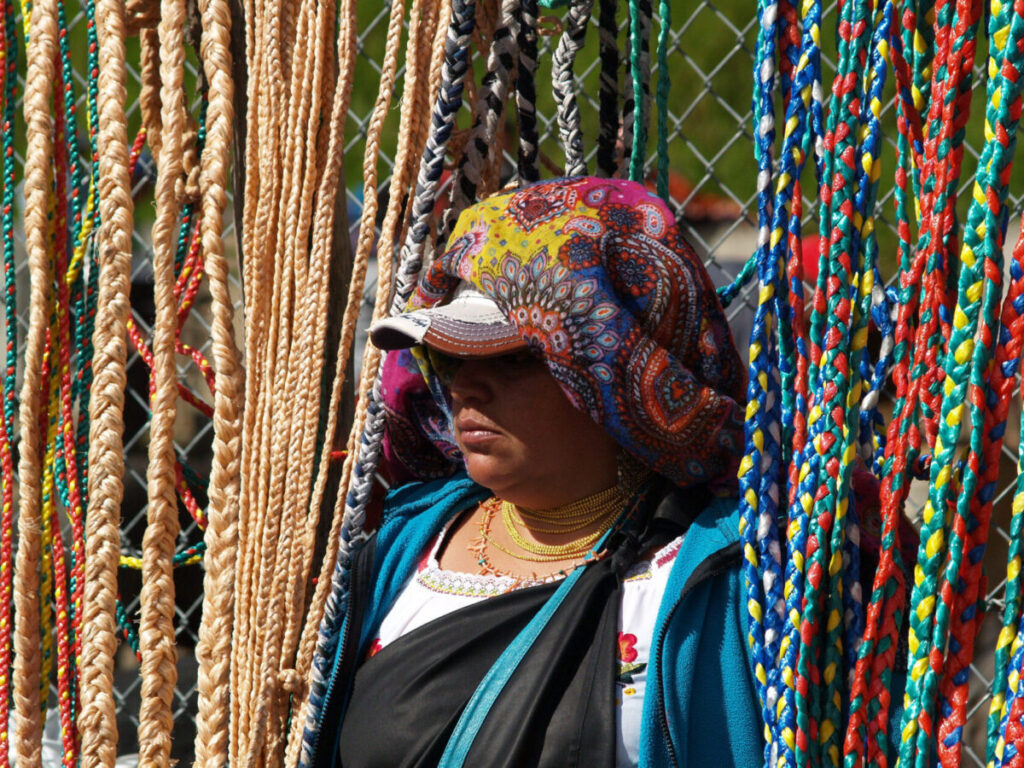
photo: Pierre Blanchard via Flickr
Otavalo
I’ve left this little gem for last because it is the last place you should visit just prior to your homeward flight. Like, really — the last place. Seriously, don’t make the same mistake I did. Especially if you like to shop— and I know you do. You’ll have to store all that shit someplace until you leave, and believe me that’s not easy.
Otavalo is Quito’s market town, and it is where you will want to go to load up on locally-crafted souvenirs for all of your friends and family. It is also a wonderful place to take photos. Otavalo is famous for its blocks upon blocks of eclectic craft vendors that descend on the town from surrounding Andean villages. It is a blend of flea market and fine art show. You’ll find teddy bears made of alpaca fur, intricately woven textiles and baskets, handmade jewelry, paintings both mundane and unique, hammocks, musical instruments, Panama hats, sculptures, pottery, colorful fruit stands, fragrant meat counters. The list goes on and on.
Tables are colorful and packed with treasures, and they line the checkerboard streets as far as the eye can see. It is truly a bargain shopper’s paradise (and yes, bargaining is acceptable, but don’t be an asshole about it). A brief warning, however—if you like to shop, make sure you budget enough time to take your time in Otavalo. I recommend a full day (at least) for browsing the wares, more if you want to explore the area.
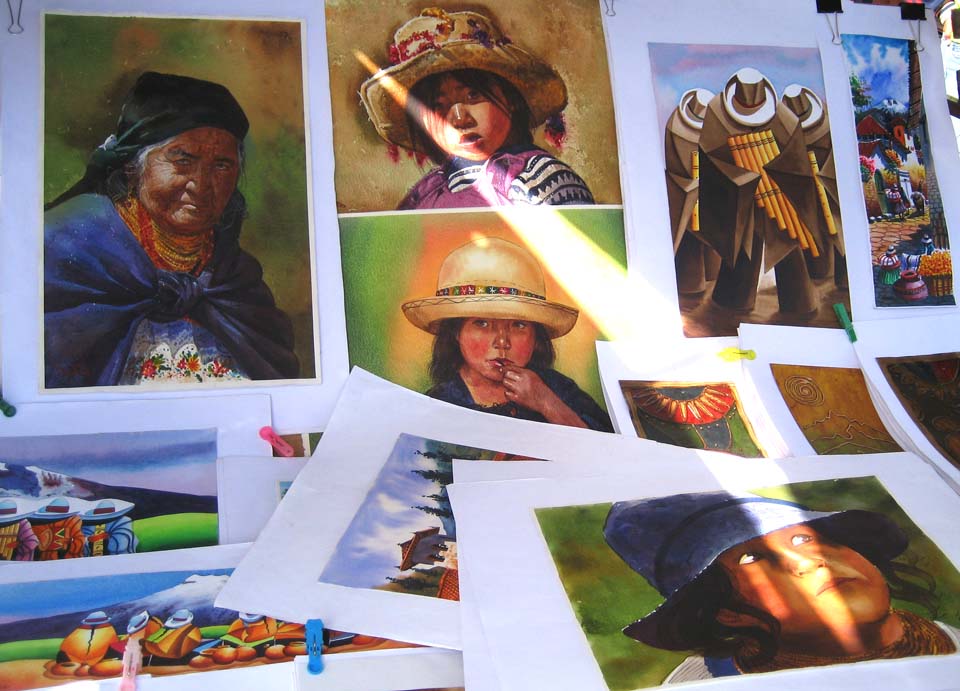
Photo: Jennifer Wu via flickr
Peguche
Here is what you shouldn’t do: Don’t try to get there and back from Quito in the same day. I took my mother (an intrepid shopper) without doing my research, and barely made it back to Quito alive ( maybe it wasn’t that bad, but close). I didn’t realize how far it was, and we didn’t research the bus schedule, so we ended up on a late-morning bus that didn’t get us to the market until noon. We went on a Tuesday (not the best day, see below), so there weren’t as many vendors on the streets.
My mom got busy bargaining, and before we knew it, people were closing down. She started buying up everything she could find (as I tried to pretend I didn’t know her), and I was content to let her close the place down until I overheard someone saying that the last bus had just gone by. “El ultimo?”
I asked in my limited Spanish, and they explained (near as I could tell) that the last bus from Otavalo had left the station, but more would go out tomorrow. Unfortunately, we were flying to Guayaquil the following morning, out of the Quito airport, and needed to get back to our hostel tonight. We were told “No hay problema”, we could walk out to the highway and flag down any bus heading SW and we would get to Quito. So, that’s what we did: My 65-year old mother and myself, laden down with enormous bags and boxes of loot from my mom’s epic shopping spree, stood on the side of the (very busy) highway and stuck our thumbs out to passing traffic. Well, passing buses. And sure enough, eventually one stopped for us, and it was going to Quito. We didn’t die.
Here is what you should do: Stay the night. Plan to be there on a Wednesday or Saturday (those are the busiest, best market days). If you can, take the time to visit Las Cascadas de Peguche (Peguche Waterfall). The waterfall is a local indigenous ceremonial site, used for purification, as well as a very popular attraction for both local and foreign tourists. The waterfall is impressive, with 50-feet of cascading turbulence in the foothills of the Imbabura volcano. A lovely trail is maintained to the base of the falls, and it is not unusual to see people wading into the plunge pool beneath. There are even places to get an adult beverage to enjoy with the view. Insects are plentiful, so take repellant, and maybe a change of clothes if you plan to swim, it can get chilly at ~8,000’ elevation. The town of Peguche is ~3km NW of the town of Otavalo, ask in town for the trailhead.
Otavalo Market (Plaza de los Panchos):
Hours: Daily 7a-6p (best days Sat/Wed)
Cost: $2.50 bus fare
Getting There: Bus from Carcelén bus terminal in Quito. Use Cooperativa Los Lagos or Cooperativa Otavalo. ~2 hrs.
Places to Stay in Quito
I am a creature of habit, so most times when I visited Quito I stayed in the same place — La Mariscal Sucre. This is an area of Quito also known as ‘Gringolandia’ (yes, this is embarrassing, but also accurate). Though I generally seek out authentic cultural experiences during my travels (i.e. avoiding areas with lots of other tourists), in big cities, I feel like there is safety in numbers. Quito, like other major cities, has its safe neighborhoods and its dangerous neighborhoods. If you aren’t very familiar with the city it is easy to stumble across the latter. La Mariscal is an area frequented by tourists and occupied by expats. It is both safer and more dangerous than other, less touristy areas, but at least the dangers are ones that will be familiar to frequent travelers.
Since the area attracts ‘wealthy’ tourists, property crimes tend to be higher here (especially after hours) than in other areas of the city, but violent crimes are still uncommon, as far as I can tell. As long as you take certain precautions, La Mariscal is a fun, safe, convenient place for short stays in Quito. I always stayed at one of two places: the Crossroads Hostel (since sold and rebranded as The Yellow House) or Posada del Maple. The Yellow House is conveniently located across from The Magic Bean restaurant (best gringo coffee in town) and Posada del Maple provides an excellent breakfast that includes comfort favorites such as pancakes with maple syrup.
If you are a solo female traveler, you have to be extra cautious, as usual. You might want to try staying at a place that caters to solo travelers, such as Community Hostel in the historic center of the city. This hostel is aptly named, creating a neighborly environment through nightly communal dinners and daily activities designed to connect fellow travelers. It has the added benefit of helping to support local nonprofits with a portion of your fees. Friends Hostel, also in the historic district, is a good option for female travelers. They offer both private and dorm rooms, but dorms are split by gender (whereas most hostels are mixed).
They also provide meetup opportunities, including regular tours of Old Town, and there is a fully-equipped shared kitchen if you want to do your own cooking. El Hostelito, located in a safe, residential neighborhood in the center of modern Quito, is another place that offers not just beds but also an opportunity to connect and interact with other solo travelers. Dorms are also more private-feeling, offering self-contained “pods” that are partially enclosed with their own curtain, outlet, light, and storage locker. There are even “couple pods”. El Hostelito offers free walking tours of the historic center, Guapulo, or La Floresta, including free graffiti and food tours organized by Quito Street Tours. If you go on the graffiti tour, keep your eyes open for pieces by La Suerte, part of a female art collective in Quito called Los Fenómenos.
Okay, so I guess Quito isn’t that bad. I’ve had some good times there. I hope our guide (like the others) helps you make the most of your stay, however brief it might be. Hay que aprovecharse!
by Lisa Riley
READ MORE
SUFFRAGETTE CITY: THE WOMEN’S GUIDE TO BATH, ENGLAND
CRYSTAL CRANE HOT SPRINGS: MAGICAL FALL ESCAPE
EXPLORE PANAMA: AN ACTION-PACKED TRIP TO BOQUETE



